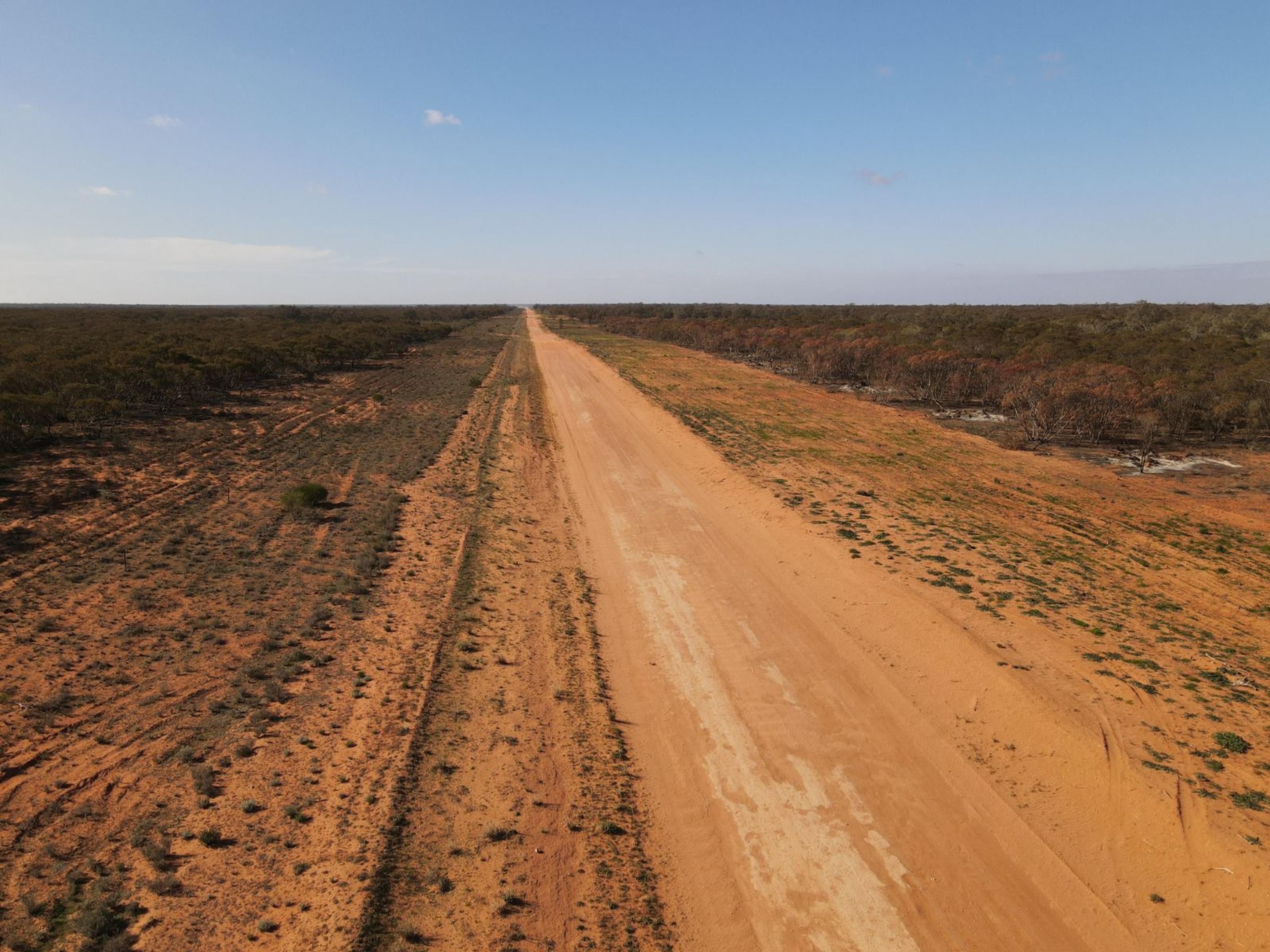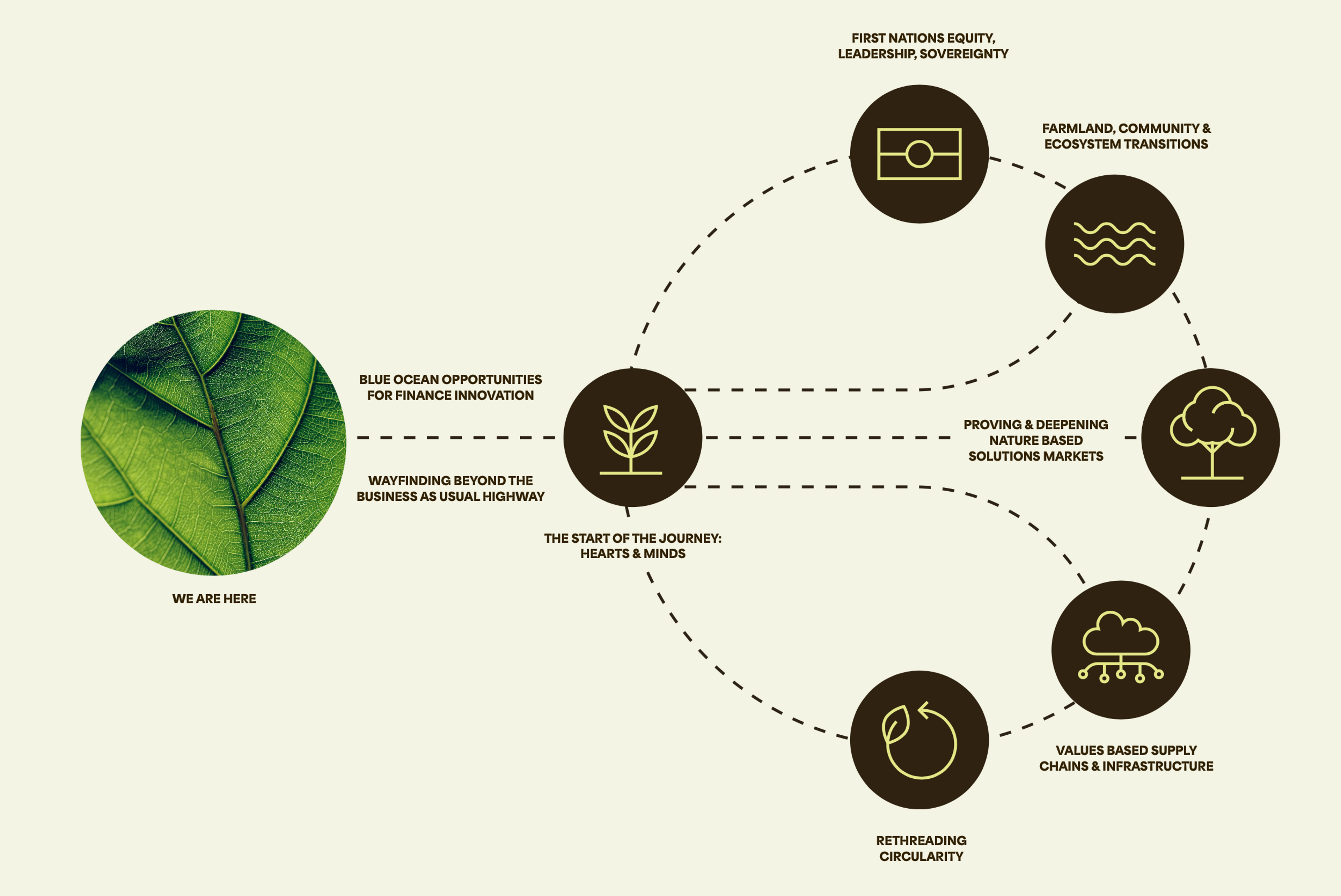A Roadmap for Regenerating Investment in Food and Farming
We know you’ve heard all the alarming statistics many times over — biodiversity loss, ocean acidification, deforestation, climatic extremes — and you don't need us to rehash the grim picture here.
Instead our focus is on how we move out of the mess we're in.
So come and dive deep with us, into solutions and pathways that can draw us back within planetary bounds and unfold patterns of restoration and regeneration.
In the words of the International Panel on Climate Change Chair, Houseng Lee: ‘we have the tools and the know-how’ to alter our current trajectory(IPCC 2022).
Part of this transformative picture is regenerating our farming and food systems. There is ever-accumulating evidence that the food and fibre sector has a profound role to play in addressing planetary boundary transgressions, and in rethreading ecological and socio- economic resilience across ecosystems.
A growing awareness of this significant potential has led to an increase in interest in how to support a regenerative transition from the philanthropic and investment communities, globally and here in Australia. At Sustainable Table, we’ve been working up close to this burgeoning interest, and working with the growing scale and maturity of work on the ground, which is largely lacking an enabling ecosystem of finance.
Our conversations and encounters — across food hubs and cattle stations, remote First Nations communities and market gardens, from the heart of the wheat belt to ocean farming initiatives — indicate that we need to bridge the gap between this evolving innovative field of play and the investment sector.
The resounding message from these encounters is that we must build relationships, conversation and understanding across these two very different worlds so that we can work out, together, how to deploy and direct the support and capital required. This Investment Roadmap is a key step in this undertaking.
We are using the term roadmap because our intent is for this research to be of navigational use in the journey to developing regenerative food and farming systems.
In our colonial society, maps have a history of naming and claiming territory, of erasing history and sovereignty and legitimising theft — this is not that kind of map.
Given the complexity and dynamism of the system, this map is something more emergent. It’s a map for wayfinding, for this is the task at hand. There is no eight-lane motorway already carved out that we can hop on to take us all the way north, straight, sure and certain to an exit point where the planet is back to health, her systems humming.
As investors, practitioners and funders we have to get off the highway and out of the systems that are hurtling us towards an unlivable future. To the left and the right, upfront and behind there are other paths and ways to follow. Some are marked, others are in formation, some are yet to be traversed, and there are others that have been walked since ancient times.
It is these we have mapped, through interview and conversation, through listening and reading, across the past six months and beyond.
We have been focused on not just the what and where of these paths, but also the how. We have heard, loud and clear, that we can’t enable transformation if we bring the dominant extractive paradigms of finance to play in the task of regeneration.
We can greenwash and cloak the old paradigms but, resplendent in their new gear they will still tip us back into modes of operation where we can no longer afford to be.
So, to accompany the emergent roadmap, we have developed an evolving suite of principles to inform and deepen the how and intent of our travels. These principles are drawn directly from our interviews and research across the Australian and global field of play in regenerative transitions.
We recognise the very real risk in articulating a bold roadmap towards regeneration — the risk that it gets boxed into the ‘too hard’ basket. For many of the new pathways are slenderer than the worn-down highways we are used to traversing, and the combined inertia and vested interests of our existing systems can seem so set in place, far too heavy & calcified to shift.
So at the outset, we just want to make clear that yes, this roadmap is aspirational and bold.
This is no time for placating egos, making folk comfortable, or propping up broken systems with business-as-usual targets and pathways of stasis.
The Map
“There are two ways to navigate towards a desirable future:
1. Following instructions, recipe style from someone who knows the way and who tells you which path to follow. You can only go where someone else has been, not create new solutions.
2. Understand the principles of travelling. Learn how to read a map, understand a compass, steer a vehicle and know how to distinguish and deal with different landscape types. There is so much to explore when you are not condemned to stay on motorways or clutch your tourist guide. This allows you to follow your own path, make your own decisions and discover new places where no-one has been before.”
— Jutta Goldammer The Power of A Desirable Future, 2020.
Pathways to Regeneration
As we sketch out the map of emerging pathways to regeneration, we're going to ask you to pause, take a breath and think into the space of transformation.
We are calling this blue ocean thinking - the blue ocean mindscape is one we need to open into so we can conceive of pathways and futures that transcend, rather than compete or comply, with the constraints of existing structures.
We are racing through the critical decade, still, largely on the same trajectory of degeneration and destruction - a new map is required, one that pushes us beyond redundant, comfortable tweaks to business as usual.
In our research, we've identified six key pathways to regeneration which underpin the growth of life-centred food and fibre systems. We define these pathways as:
- Bottlenecks in the growth of and transition to regeneration.
- Unique leverage points requiring tailored forms of regenerative finance in order to realise their transformative potential.
We have developed, questioned, refined and expanded these pathways through deep listening and conversations with:
- Regenerative practitioners across our food and fibre systems — farmers, processors, retail outlets, educators and advisors, First Nations elders, farmers and thinkers.
- A spectrum of stakeholders in the finance and investment community, from family offices to government agencies, banks, philanthropy and investment funds.
- Thought leaders and game-shifting practitioners - across farming, food and finance realms who are working to develop transformative approaches to capital deployment.
Note we knew this couldn’t be an exhaustive undertaking - we didn’t have the time or the resources. What we tried to do was target a broad cross-section of actors to feed in a range of perspectives.
We also emphasise that this map is emergent, not static and set in stone - the state of play is dynamic and the unexpected and unforeseen are popping up all over the joint. Pathways will shift, others will emerge, the landscape will change and who knows what the weather is going to throw our way. So get your boots on (if you wear them) - there is much to explore!
The Map - Pathways & Principles
Six key pathways to regeneration emerged from our research, along with key principles for navigation.
You can explore each of them, or just those you are interested in learning more about, by clicking through to the following articles.
Key Pathways to Regeneration
- Hearts & Minds
- First Nations Equity, Leadership & Sovereignty
- Farmland, Community & Ecosystem Transitions
- Proving & Deepening Nature-Based Solutions Markets
- Value-Based Supply Chains & Infrastructure
- Rethreading Circularity
Principles for Navigation
- Relationships are all
- Move at the speed and depth of trust
- Collaboration
- Humility
- Integration
- Terroir
Learn more about the principles here.
This article is an extract from Regenerating Investment in Food and Farming: A Roadmap.


